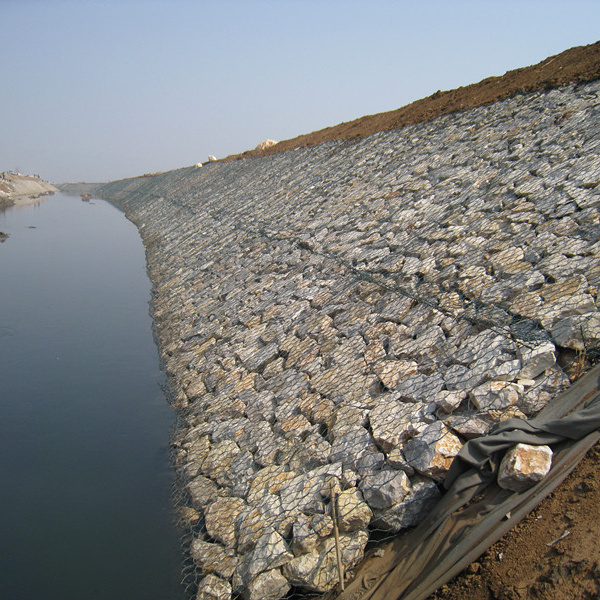Dec . 05, 2024 14:56 Back to list
gabion retaining wall cost comparison factory
Gabion Retaining Wall Cost Comparison Evaluating Your Options
When tasked with implementing a retaining wall for landscaping, construction, or erosion control, the choice of materials can greatly affect both the costs and aesthetic value of the project. One option that has gained popularity is the gabion retaining wall, known for its strength, versatility, and natural appearance. This article seeks to provide a comprehensive cost comparison of gabion retaining walls against traditional retaining wall types, helping you make an informed decision.
What is a Gabion Retaining Wall?
Gabion walls are structures made of wire mesh baskets filled with various materials, typically stones or other durable aggregates. These walls are not only strong but also offer a flexible solution for managing soil retention, drainage, and landscaping needs. They can blend beautifully with natural surroundings and can be customized to various heights and designs.
Cost Factors in Gabion Retaining Walls
1. Material Costs The fundamental cost drivers for gabion walls include the gabion baskets themselves and the fill material. Gabion baskets are usually made from high-tensile strength wire, which could range between $1.50 to $3.50 per square foot, depending on the quality and thickness of the wire. The price of filling materials varies significantly. Locally sourced, bulk stone can cost between $50 to $100 per cubic yard, while specialized stones may cost more.
2. Labor Costs Installing a gabion wall can be labor-intensive. The complexity of the wall design, site conditions, and accessibility all affect labor costs. Typically, labor for gabion wall installation can range from $30 to $60 per hour, and the overall labor cost can be significantly reduced if the project is a DIY initiative.
3. Site Preparation Like any construction project, the site must be adequately prepared before building a gabion wall. This might involve leveling the ground, removing vegetation, or ensuring proper drainage. Site preparation costs vary depending on the site condition but generally range from $1 to $5 per square foot.
4. Additional Features While basic gabion walls are straightforward, you may wish to add features such as decorative finishes, lighting, or integrated planting areas. These enhancements can increase costs but also add significant aesthetic value.
Cost Comparison with Traditional Retaining Walls
gabion retaining wall cost comparison factory

When comparing gabion retaining walls to traditional alternatives like timber, concrete, or brick, notable differences emerge
- Timber Retaining Walls are often cheaper initially, with costs ranging from $10 to $40 per square foot, depending on wood type and treatment. However, timber tends to have a shorter lifespan due to rot and insect damage, often requiring replacements every 5 to 15 years.
- Concrete Retaining Walls can be more expensive, typically costing between $20 to $50 per square foot, not including installation complexities. Concrete is durable but may require additional aesthetic treatments, which can add to the cost.
- Brick Retaining Walls offer a classic look but come at a higher price, often exceeding $30 to $80 per square foot, along with labor-intensive installation processes.
In contrast, gabion walls generally provide a competitive cost, typically falling between $15 to $30 per square foot when including materials and labor. Their longevity and strength can present savings over time, as they often outlast traditional options.
Environmental Considerations and Aesthetic Value
Gabion walls are also increasingly favored for their environmentally friendly nature. The use of natural stone can blend seamlessly into most landscapes, enhancing natural beauty while promoting erosion control. Additionally, gabions promote drainage and mitigate forceful water runoff, contributing to soil retention without the necessity for complicated drainage solutions.
Conclusion
Ultimately, the choice between a gabion retaining wall and other types should consider not only upfront costs but also longevity, aesthetics, and environmental impact. Gabion walls offer a durable, cost-effective option with a unique visual appeal that traditional retaining walls may lack. Before making a decision, homeowners and builders should conduct a thorough cost analysis tailored to their specific project requirements, ensuring they select the best option for their needs.
-
Why PVC Coated Gabion Mattress Is the Best Solution for Long-Term Erosion Control
NewsMay.23,2025
-
Gabion Wire Mesh: The Reinforced Solution for Modern Construction and Landscape Design
NewsMay.23,2025
-
Gabion Wall: The Flexible, Seismic-Resistant Solution for Modern Landscaping and Construction
NewsMay.23,2025
-
Gabion Wall Solutions: The Durable, Decorative, and Affordable Choice for Every Landscape
NewsMay.23,2025
-
Gabion Basket: The Durable and Flexible Alternative to Traditional Retaining Walls
NewsMay.23,2025
-
Gabion Basket: The Proven Solution for Slope Stability and Flood Control
NewsMay.23,2025
-
Versatility of Chain Link Fence Gabion
NewsMay.13,2025






